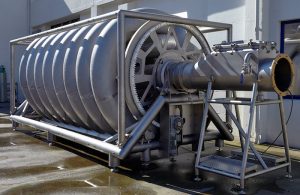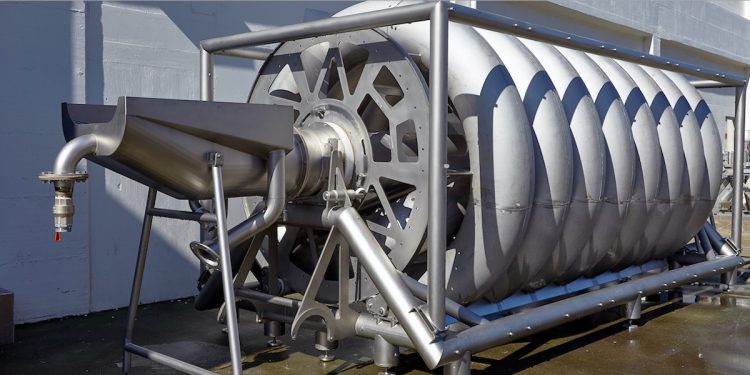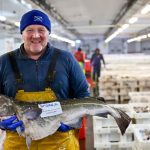Skaginn 3X is using this year’s European Seafood Exposition in Brussels to unveil a new concept in fish handling and transport with its innovative ValuePump™, which brings together a number of technologies to offer a range of possibilities.
The companies designers and engineers have come up with a heavyweight spiral pump system that can shift fish from one location to another, but also offering a variety of handling possibilities for the fish while in transit.
As Skaginn 3X’s managing director Ingólfur Árnason explained, this is a highly versatile piece of equipment that can be slotted into any existing processing line, and which solves transport problems while offering processing opportunities at the same time. The ValuePump is designed for a temperature range from 80°C down to -20°C, enabling fish to be washed, chilled, frozen, cooked, defrosted or simply moved efficiently. Using it for delousing live fish is a further option.
‘It’s a pump, but it has the capacity to shorten bleeding times as the fish pass through,’ he explained. ‘The spiral design means that we can sub-chill fish two to three times faster using this method.’

He added that the ValuePump itself is not complex technology, as it incorporates concepts that Skaginn 3X has already developed, but the combination of these makes the ValuePump special.
‘It’s a new tool in the toolbox. It’s not fundamentally complex. It uses much of the technology we have developed ourselves, such as heat transfer systems,’ Ingólfur Árnason said.
‘It can handle everything from small fish up to 10kg fish – and that could be pelagic or demersal fish, wild-caught fish or farmed fish, or live fish, with a choice of treatments during the transfer.’
He commented that trials with sub-chilling fish in the ValuePump have been impressive, quickly and effectively surface-chilling fish to below zero, to bring them to the optimum temperature for filleting.
‘The cooling efficiency is very good,’ he said. ‘It brings us closer to our aim of getting as near as we can to a 30-day shelf life with efficient and effective cooling. We can’t improve quality. We can only preserve quality and the key is to delay quality loss, starting as quickly as possible after slaughter. We can do this post-rigor, although it’s more effective to start pre-rigor, and we have to fix the quality at that point to be able to maintain it for as long as possible – and this is a big step in that direction.’









